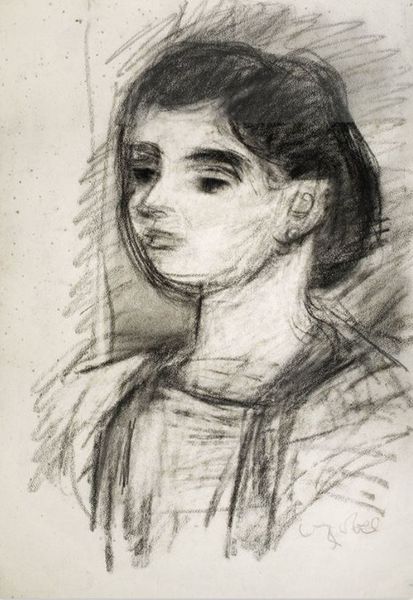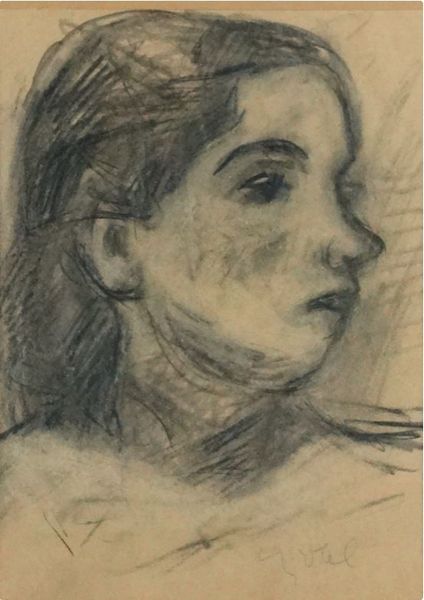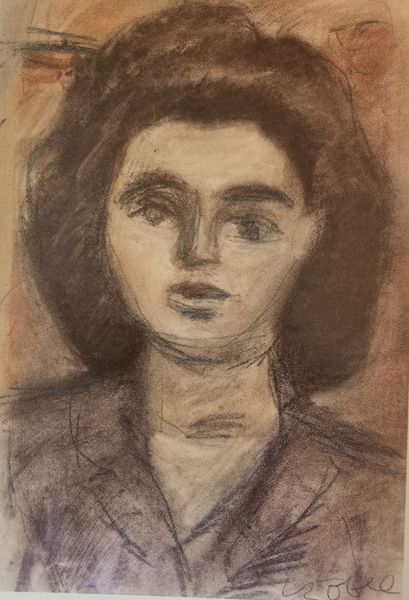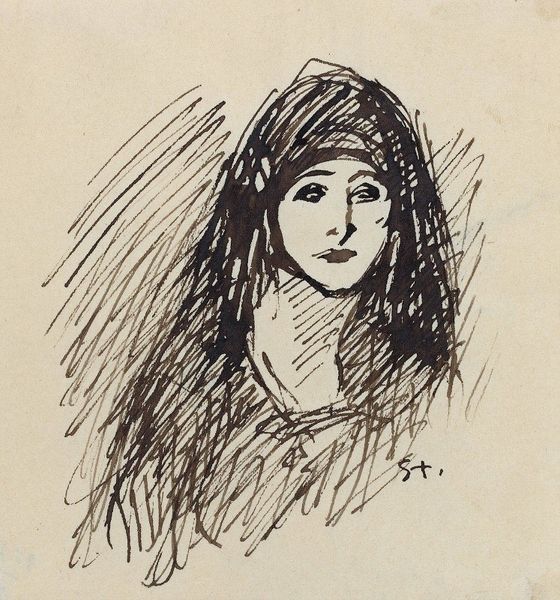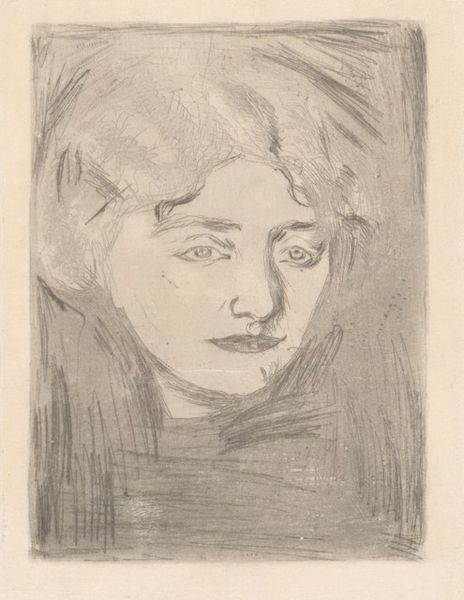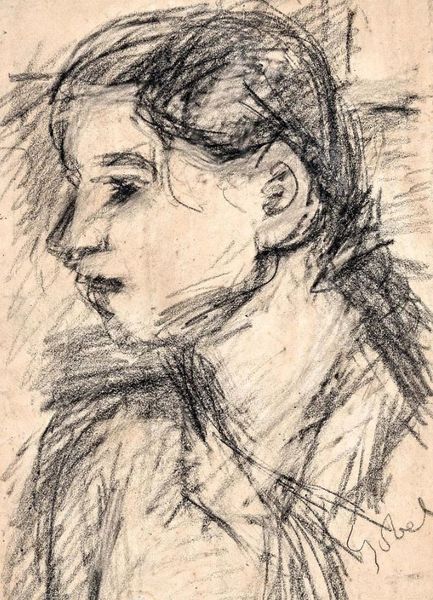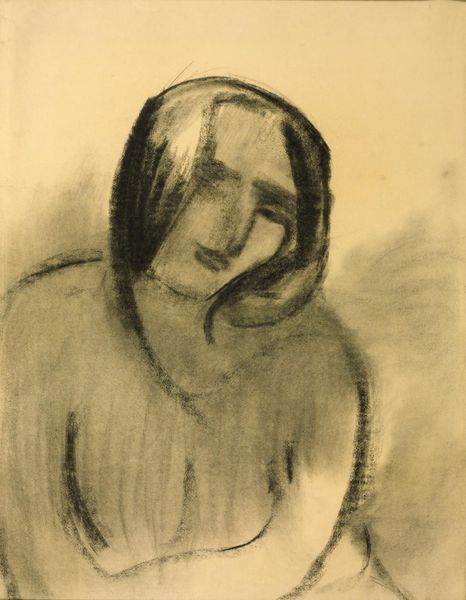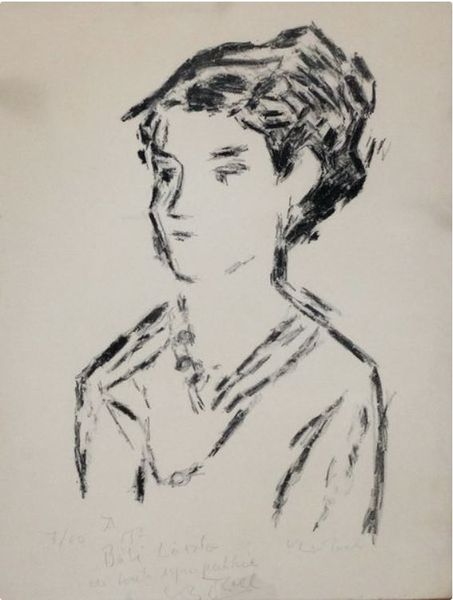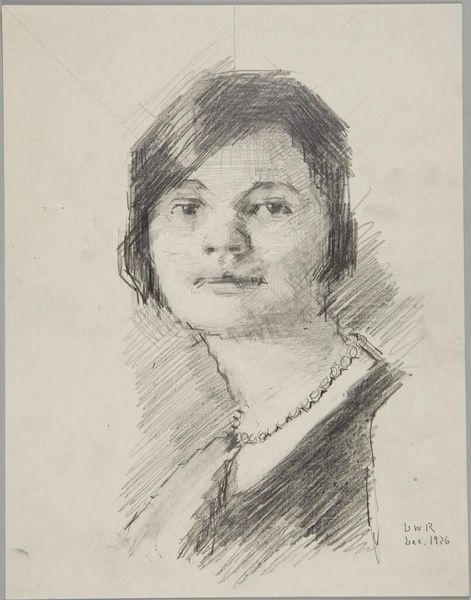
drawing, pencil
#
portrait
#
drawing
#
pencil drawing
#
pencil
#
portrait drawing
Copyright: Bela Czobel,Fair Use
Editor: Here we have Czóbel Béla’s portrait of a young woman, rendered with charcoal and pencil on paper. It has an unfinished quality. The subject's gaze feels heavy, almost melancholic. What do you see in this piece? Curator: What strikes me is how Czóbel, even with these raw materials, manages to subtly critique the established beauty standards of his time. Look at the seemingly unfinished lines, the shadow play – is it celebrating or challenging the traditional representations of femininity? I encourage you to consider: whose gaze are we really seeing reflected here? Is it hers, his, or society’s? Editor: I hadn't considered it that way. I was focused on the sort of sadness in her eyes. Curator: It’s essential to situate Czóbel's work within the context of early 20th-century Central Europe, amidst rising social unrest and evolving gender roles. The "melancholy" might not be solely individual, but rather a reflection of the collective anxieties of women at a societal crossroads, don't you think? Editor: That makes sense. So, you're saying it’s possible to view this portrait as a kind of subtle protest? Curator: Absolutely. Art doesn't exist in a vacuum. By understanding the socio-political climate, we can unearth deeper meanings and layers of commentary. Consider how women artists were fighting for representation and equality; how might a male artist engage, subvert, or resist the pressure to participate in shaping cultural narratives of women? Editor: It gives me a lot to think about, and I now realize I didn't appreciate how much context really informs our interpretation of artwork! Curator: Precisely. Keep asking questions, especially those that unsettle conventional interpretations. Art is a powerful tool, a mirror reflecting and refracting social change, and our understanding evolves as society does.
Comments
No comments
Be the first to comment and join the conversation on the ultimate creative platform.
